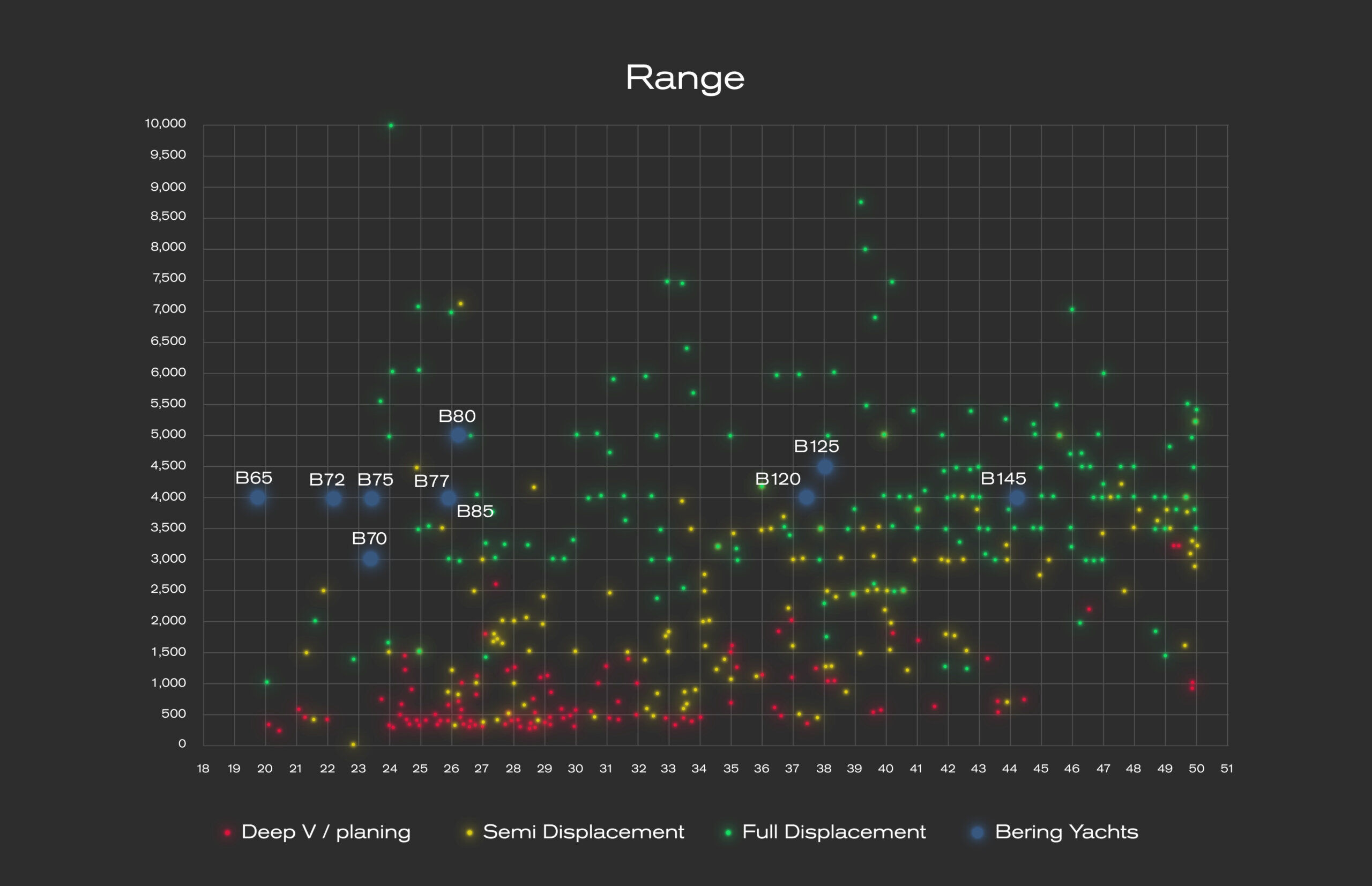What is the Range
Range is the distance that a boat at a particular cruise speed can cover without refueling. Sounds simple; however, it is quite an ambiguous indicator. For example, the vessel’s range depends on features like: weight, fuel tank volume, as well as cruise speed. The speed of a faster boat means high fuel consumption thus decreasing the range. A light boat will spend less fuel, but it is light because it has smaller tanks. Is there enough gas to get where you need? Similar arguments can be made about the motor boat types. A planing boat is way lighter and faster than a displacement boat, but it will require more refueling stops to cover the same distance than a slow and heavy vessel with autonomous travel.
Let us not forget about the external conditions that can also affect range. A storm or rough waters can slow a boat down. Waves push you back or you need to constantly stir up the vessel, and this requires additional fuel even if your progress is minimal. A boat with a large fuel tank gives you a peace of mind even in these extreme situations – you do not want to be stuck in the middle of nowhere with an empty tank.
Gas is necessary for boats to function; but boats (and humans) also need water. While at port, a boat fills up its water tanks with so-called white (clean) water. During the trip, this water may turn gray and then black depending on its level of contamination. This wastewater has to be disposed of at the next stop, but in the meantime it is carried onboard. Thus, the range depends not only on the size of the gas tanks; water storage matters too.
Bering Yachts compared to other boats

We compared different boats according to their displacement types (planning yachts, semi displacement, full displacement) and length. Without a doubt, Bering yachts are above average in their categories.
As long as range was never a goal for planning boats, this type is not the one to be chosen for Arctic trips and ocean crossing, mainly because their range doesn’t go over the 1500 nm mark. However, semi-displacement boats show greater range. Their “middle” is 2500 nm, but still depends on the boat size. As expected, full displacement boats show out the best results.
Exploring yachts up to 24 meters, it becomes obvious that the performance of Bering Yachts significantly differs from other boats in this category. Consider that the Bering 70, Bering 85 and Bering 80 have a range up to 5000 nm. As for superyachts, you can sail almost a half of the tour around Australia without any reload.
Summary
So, range is about the balance between weight , speed, fuel tank volume and the distance. However, it is not only about the numbers. Range provides a boat owner freedom and time. For example, someone wants to travel from an old European port of Corsica to the wild shores of Greenland. It is a little less than 4,500 nautical miles, and if your boat can cover this distance in one fueling, there is no need for stops, and you choose your route. Bering 77 will travel this distance in about three weeks giving you and your loved ones 21 days of solitude, privacy and absolute freedom.
If you prefer the way of independent travel, Bering offers a wide variety of options that are dependable and rangy. These displacement steel boats are capable of going at cruise speeds between 8 and 12 knots with the expected range of between 4,000 and 5,000 nautical miles. With Bering Yachts, you can explore the seas as you wish. The choice is always yours.